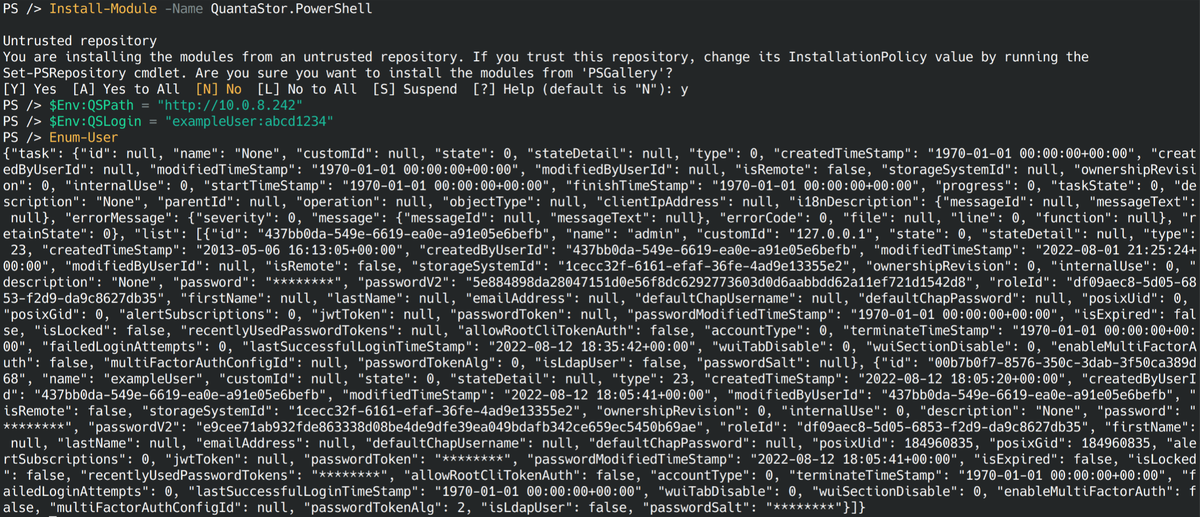QuantaStor PowerShell Command Reference
PowerShell installation methods
PowerShell is supported on Windows, Linux, and Mac. In addition to system packages and snaps provided by Microsoft, it can also be installed with a functioning recent dotnet SDK as a global tool (If you already have the .NET Core SDK installed):
dotnet tool install --global PowerShell
If you do not have the the .NET Core SDK installed and are on a much older version, then you can use the MSI installation package found at the following URL: https://learn.microsoft.com/en-us/powershell/scripting/install/installing-powershell-on-windows?view=powershell-7.3#msi
Recommended versions
To use the QuantaStor PowerShell module, you must be on PowerShell 7 or newer and dotnet 6 or newer.
To check what version you have installed, execute the following command from a PowerShell console: $PSVersionTable
QuantaStor PowerShell module installation
Our module is hosted on the PowerShell gallery and can be found here. Installation is easily done through PowerShell:
Install-Module -Name QuantaStor.PowerShell
Commands
The commands can be slightly renamed from other instances to be closer to PowerShell standards. For example instead of UserEnum there is Enum-User. All commands can be listed with:
Get-Command -Module QuantaStor.PowerShell
And help for a command can be viewed with:
Get-Help COMMAND
For example to view the parameters of Add-User:
Get-Help Add-User
Environment Variables
There are two current environment variables QSPath and QSLogin. Unless set, QSPath is http://localhost/. Commands for setting these variables in PowerShell are below:
$Env:QSPath = "http://x.x.x.x:y"
$Env:QSLogin = "username:password"
